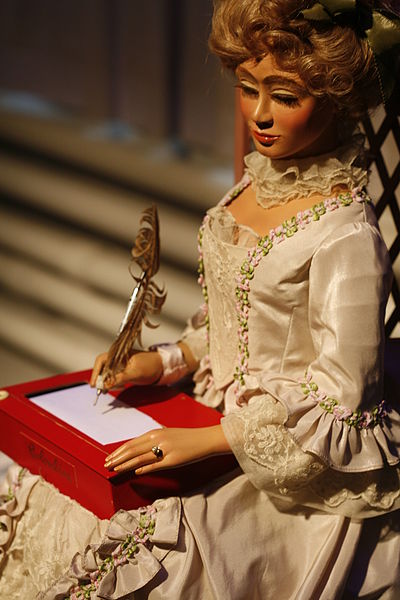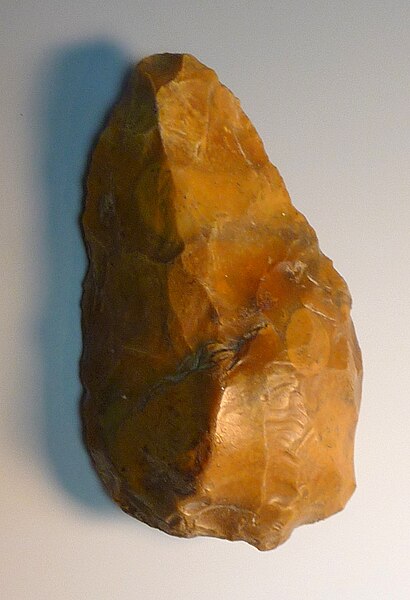An automaton is a relatively self-operating machine, or control mechanism designed to automatically follow a sequence of operations, or respond to predetermined instructions. Some automata, such as bellstrikers in mechanical clocks, are designed to give the illusion to the casual observer that they are operating under their own power or will, like a mechanical robot. The term has long been commonly associated with automated puppets that resemble moving humans or animals, built to impress and/or to entertain people.
The book About automata by Hero of Alexandria (1589 edition)
The Antikythera mechanism from 150 to 100 BC was designed to calculate the positions of astronomical objects.
Automaton in the Swiss Museum CIMA
First Strasbourg clock rooster, worked from 1352 to 1789.
A machine is a physical system that uses power to apply forces and control movement to perform an action. The term is commonly applied to artificial devices, such as those employing engines or motors, but also to natural biological macromolecules, such as molecular machines. Machines can be driven by animals and people, by natural forces such as wind and water, and by chemical, thermal, or electrical power, and include a system of mechanisms that shape the actuator input to achieve a specific application of output forces and movement. They can also include computers and sensors that monitor performance and plan movement, often called mechanical systems.
A Honda F1 racecar engine
A flint hand axe was found in Winchester.
The Kinematics of Machinery (1876) has an illustration of a four-bar linkage.
Diesel engine, friction clutch and gear transmission of an automobile








